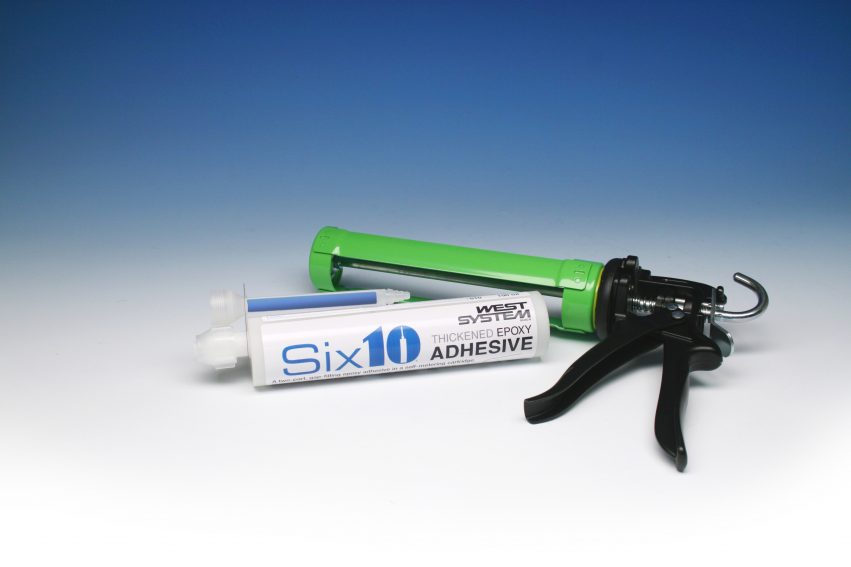
By Mike Barnard
We formulated Six10 Epoxy to work when dispensed from a u-TAH chambered cartridge with a mixing wand. Putting epoxy resin and hardener into a single cartridge was an idea we had years ago, but until the u-TAH cartridge was developed, the technology was never around to do it. Once that technology became available, it was time to formulate Six10 Thickened Epoxy Adhesive.
We chose the characteristics we wanted for this new epoxy: long open time, fast through-cure, full cure overnight, and ability to cure at low temperatures. With these guidelines, our chemists formulated Six10 Epoxy with a pot life of 206 Slow Hardener and a full-cure similar to 205 Fast Hardener.
We didn’t determine the ratio needed for Six10 (2:1 by volume). It was set by the cartridge manufacturer. Our role was to formulate Six10 Epoxy to fit that ratio. We also had to choose a static mixer that would completely mix the two parts while keeping the volume in the mixer to a minimum.
In order for the static mixers to work properly, there could not be any air voids in the cartridges. Air voids exert different pressure on the resin and the hardener during the mixing process, throwing the mix ration off-kilter. To solve this, we mixed Six10’s components under vacuum. While developing the product, we used a small mixer that allowed us to mix components in a vacuum. Once the tubes were be filled, we could continue our testing. The small mixer was eventually replaced with a large mixer for final production.
We tested an assortment of mixing wands before selecting one. A longer static mixer would have wasted more epoxy (whatever was left inside the wand), while a shorter one would not have mixed the components thoroughly. The dual goal was to achieve a complete mixture while minimizing waste. To determine the performance of each mixer, we dispensed lines of epoxy and test them in our lab to see if they were fully mixed.
The cost of these static mixers also helped to determine the end choice. Some of the mixers tested were much more expensive (and didn’t perform as well) as the one we selected.
We measure the pot life and viscosity of every batch to ensure product quality, and we also measure shear thinning, the quality that makes Six10 lose viscosity when it’s worked and allows it to gel when it’s left alone. We formulated Six10 to have good shear thinning so the resin and hardener components would be thoroughly mixed by the time they reached the tip of the mixing wand. Shear-thinning also allows Six10 to saturate fabric with some effort while retaining a non-sag consistency. To test for shear thinning, we work the product to induce a lot of shear, let it sit for exactly one hour, then measure its viscosity. This allows us to compare batch-to-batch viscosities with great accuracy.
The shelf life of Six10 is a minimum of two years (just like the hardeners throughout our WEST SYSTEM line), but it should last longer, assuming room temperature storage. We keep samples of every batch of epoxy and hardener we manufacture for a minimum of 2 years.





